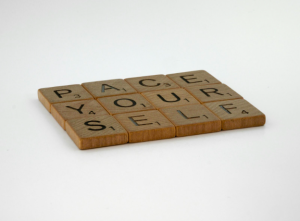Somatic movement, a practice that integrates body awareness and movement, is gaining recognition as a powerful tool for emotional healing. Rooted in the understanding that our bodies hold memories and emotions, somatic movement offers a holistic approach to processing feelings, reducing stress, and promoting overall well-being.
What is Somatic Movement?
Somatic movement refers to various movement practices that emphasize internal awareness and the sensations of the body. Unlike traditional exercise, which often focuses on external goals like fitness or appearance, somatic movement encourages participants to tune into their bodies, exploring how movement feels and releasing stored tension and emotions.
Purposes of Somatic Movement for Emotional Healing
Releasing Stored Emotions
Our bodies can store emotional experiences, leading to tension, pain, or discomfort. Somatic movement helps to release these pent-up emotions by encouraging physical expression. As individuals move, they may experience emotional release, leading to a sense of relief and liberation.
Enhancing Body Awareness
Engaging in somatic movement cultivates a deeper connection between the mind and body. This heightened awareness allows individuals to recognize emotional triggers and bodily sensations, fostering a better understanding of their emotional landscape.
Processing Trauma
Somatic movement can be particularly beneficial for those dealing with trauma. Traditional talk therapy may not always reach the deep-seated emotional and physical responses associated with trauma. Somatic practices provide a means to access and process these experiences safely and effectively.
Reducing Stress and Anxiety
Movement can stimulate the release of endorphins and promote relaxation. Somatic movement practices often incorporate breathwork and mindfulness, helping to reduce stress and anxiety levels. This relaxation response can create a more conducive environment for emotional healing.
Promoting Self-Expression
Somatic movement encourages individuals to express themselves creatively and freely. This form of self-expression can help individuals process their emotions and experiences, allowing for a deeper exploration of their feelings in a non-verbal way.
Fostering Resilience
Engaging in somatic movement can build emotional resilience. As individuals learn to navigate and express their emotions through movement, they develop coping strategies that enhance their ability to manage stress and emotional challenges.
Building Community and Connection
Many somatic movement practices are done in groups, fostering a sense of community and shared experience. This connection with others can provide support and validation, further enhancing the healing process.
Getting Started with Somatic Movement
If you’re interested in exploring somatic movement for emotional healing, consider the following:
- Find a Class or Workshop: Look for local classes or workshops that focus on somatic movement, such as dance therapy, yoga, or body awareness practices. Practice Mindfulness: Incorporate mindfulness into your movement. Pay attention to how your body feels as you move, allowing sensations and emotions to surface.
- Create Your Own Practice: You don’t need a formal class to engage in somatic movement. Simply put on music, or find a guided video on youtube, and allow your body to move freely, following its natural rhythms and impulses.
Listen to Your Body: Pay attention to what your body needs. If certain movements feel uncomfortable or evoke strong emotions, honor those feelings and adjust accordingly.







